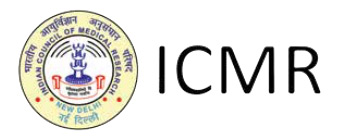The India State-Level Disease Burden Initiative
Disease Burden Trends in the States of India 1990 to 2016
This report was prepared by the Indian Council of Medical Research (ICMR), Public Health Foundation of India (PHFI), and the Institute for Health Metrics and Evaluation (IHME) through funding from the Indian Council of Medical Research, Development of Health Research, Minstry of Health Family Welfare, Government of India, and the Bill & Melinda Gates Foundation.
Download Report
Introduction
India is home to a wealth of cultural, social, and ethnic diversity across its 1.3 billion people. Its 29 states and seven union territories – many of which have populations larger than countries – vary widely in terms of their ecology, economy, and demography, all of which impact health outcomes. Accurate, comparable data on what is driving health loss is crucial for policymakers as they strive to make the best decisions possible for improving health.
Download ReportFindings
Life expectancy
One of the simplest measures for understanding overall health outcomes is life expectancy at birth. If a country is generally expanding its longevity, it usually means that people are dying prematurely at lower rates. Around the world, people are living longer on average and populations are growing older.
In 1990, life expectancy at birth in India was 58.3 years for males and 59.7 years for females. By 2016, life expectancy at birth increased to 66.9 years for males and 70.3 years for females. India has made substantial progress in improving the life expectancy at birth. However, life expectancy varied widely between the states of India. In 2016, the range was from 66.8 years in Uttar Pradesh to 78.7 years in Kerala for females, and 63.6 years in Assam to 73.8 years in Kerala for males.

Life expectancy by sex in India, 1990 and 2016

Contribution of major disease groups to total
DALYs in India, 1990 and 2016
India’s epidemiological transition
In tandem with its rapid social and economic development, India is under- going a major epidemiological transition. Over the last 26 years, the coun- try’s disease patterns have shifted: mortality due to communicable, maternal, neonatal, and nutritional diseases (CMNNDs) has declined substantially and India’s population is living longer, meaning that non-communicable diseases (NCDs) and injuries are increasingly contributing to overall disease burden.
India’s health system therefore faces a dual challenge. Although the absolute burden from diseases such as diarrhoea, lower respiratory infections, tuberculosis, and neonatal disorders is being reduced, it remains high. At the same time, the contribution to health loss of non-communicable condi- tions such as heart disease, stroke, and diabetes is rising. e precise nature of this challenge, though, varies across the country. While all states have experienced a change in disease patterns to some degree, clear di erences emerge both in terms of the extent of this change and the rate at which it has occurred.




